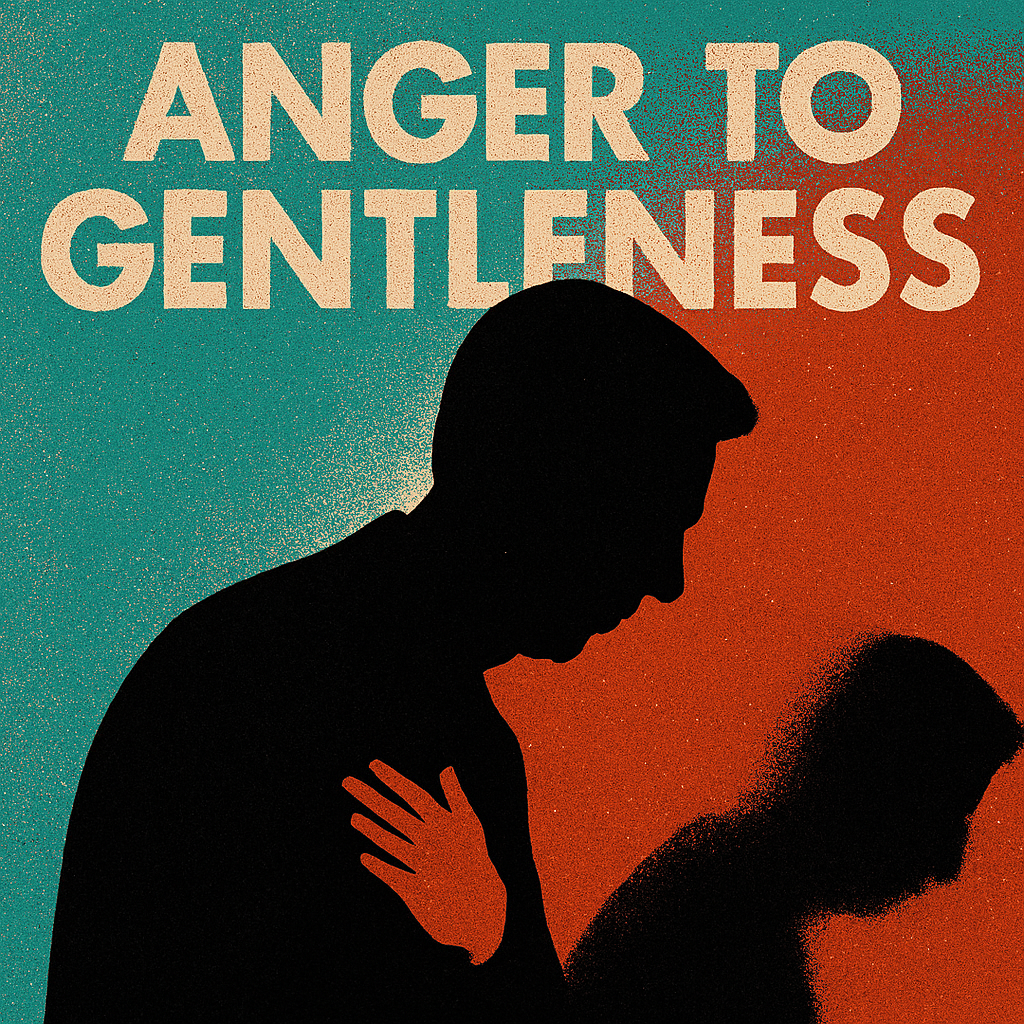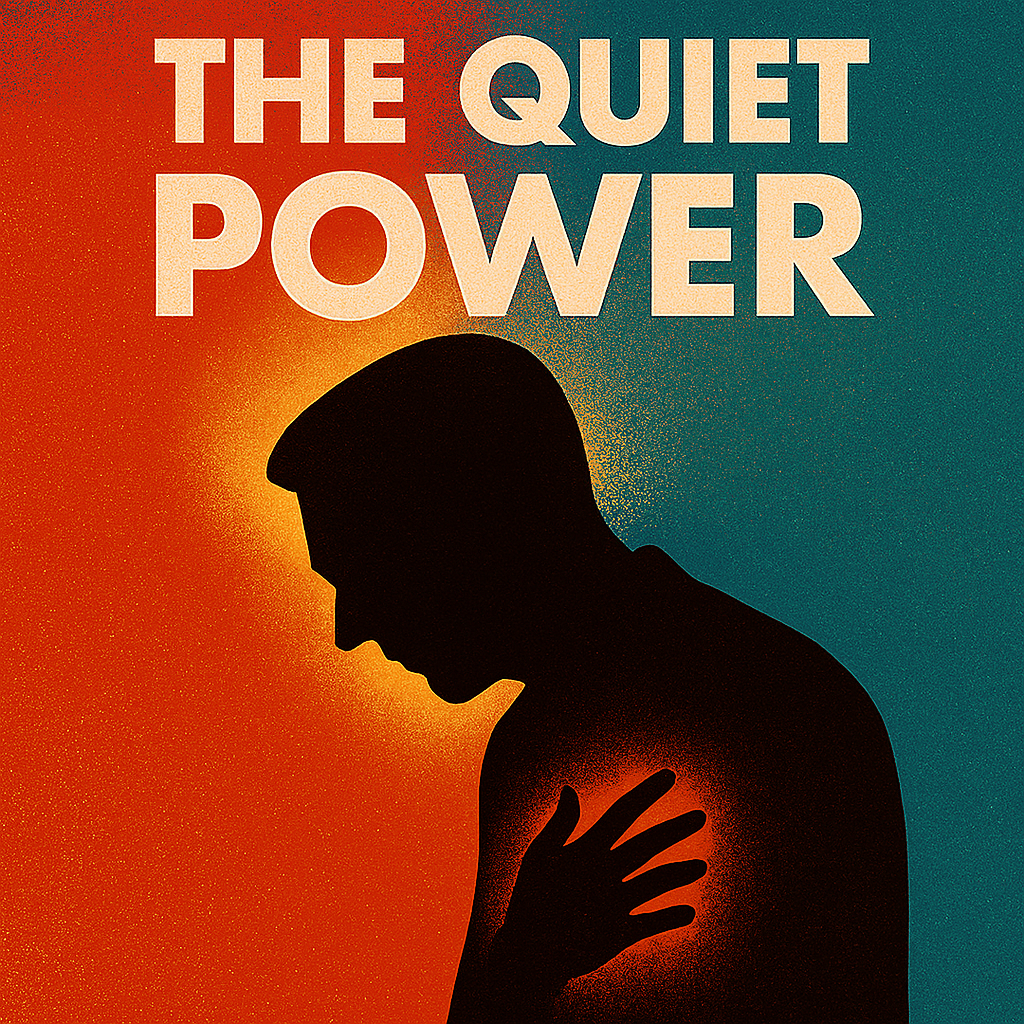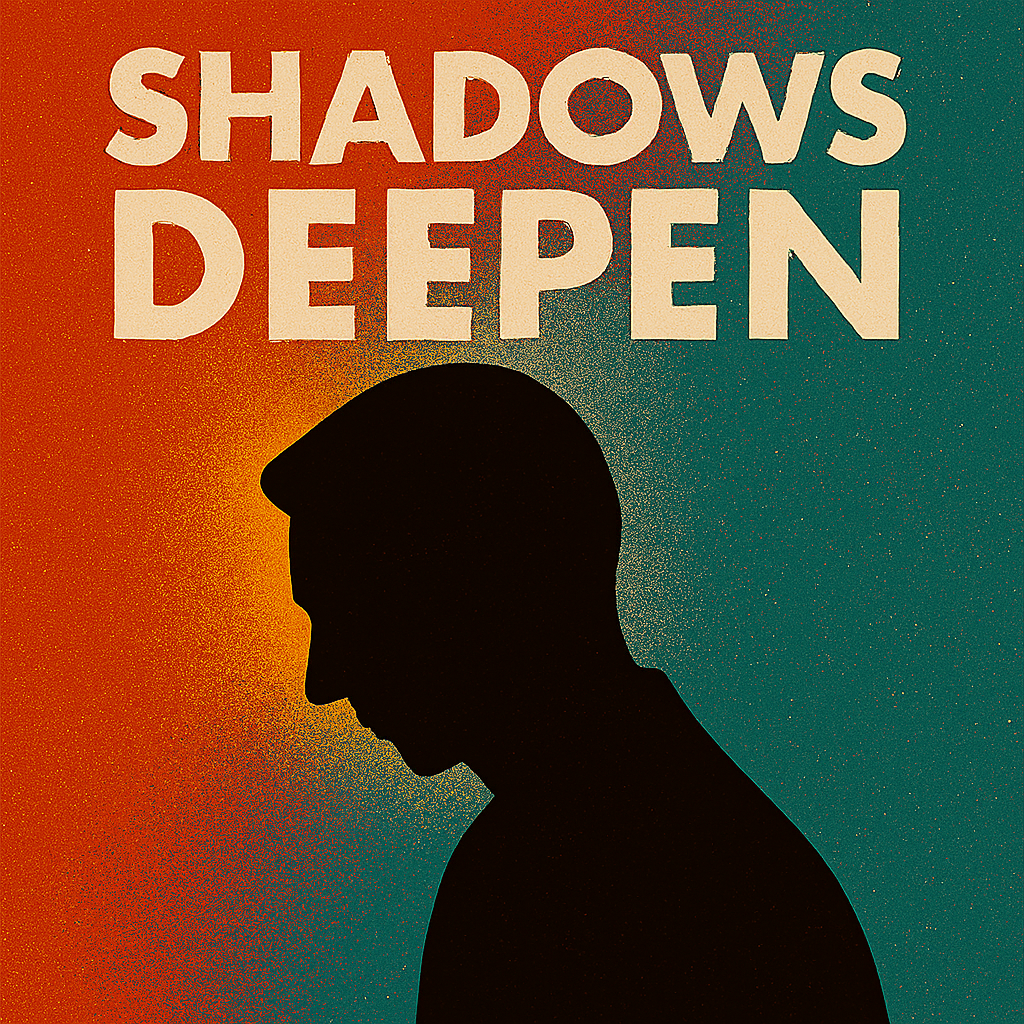
Fred Rogers - A Gentle Yet Powerful Television Host For All
The Psychology of Fred Rogers – How One Man Rewired Emotional Literacy for Children and Adults
Fred Rogers – How One Man Rewired Emotional Literacy for Children and Adults
Fred Rogers was not just a television host. He was a trained theologian, composer, and child development expert who used media to teach emotional literacy. His show, Mister Rogers’ Neighborhood, ran for over 30 years and became a cornerstone of American childhood. But Rogers’ impact was not limited to children. His psychological approach reshaped how adults think about vulnerability, kindness, and emotional regulation. He believed that feelings are mentionable and manageable. He taught that every person has worth, regardless of performance or appearance. Rogers used slow pacing, direct eye contact, and symbolic storytelling to build trust.
He avoided sarcasm, spectacle, and overstimulation. His methods were grounded in developmental psychology and emotional safety. Rogers did not entertain—he educated. He did not distract—he connected. His legacy is not nostalgia—it is neuroscience. Understanding his psychology reveals a blueprint for emotional resilience. Because Rogers did not just speak to children. He spoke to the child inside every adult.
This article is built from public facts and interviews we found—shaped into something meaningful.

Mister Rogers
Fred Rogers – WHEN THE MAN BECOMES THE MESSAGE
Fred Rogers was a licensed Presbyterian minister, but he never preached on his show. He composed over 200 original songs, many of which were used to teach emotional regulation. Rogers was a pioneer in children’s television, but he also held a degree in music composition from Rollins College. He testified before the U.S. Senate in 1969, helping secure $20 million in funding for public broadcasting with a six-minute speech. Rogers swam every morning and weighed exactly 143 pounds for most of his adult life—he saw “143” as code for “I love you” (1 letter, 4 letters, 3 letters). He answered every fan letter personally, often with handwritten notes.
Rogers was fluent in French and studied child development under Dr. Margaret McFarland, a key influence on his psychological approach. He refused to monetize his show with toys or merchandise, believing that emotional trust should never be sold. Rogers once appeared on Dr. Quinn, Medicine Woman as a guest star, playing himself. He was inducted into the Television Hall of Fame in 1999, with a tribute from Jeff Erlanger, a wheelchair user who had appeared on the show as a child. Rogers’ sweaters were hand-knit by his mother, adding symbolic warmth to his ritual.
His work was recognised and was awarded the Presidential Medal of Freedom in 2002. Rogers was known for his radical gentleness, which he described as “deep and mighty.” He never raised his voice on camera. And he taught that being kind is not a performance—it’s a practice.
Table – Fred Rogers’ Lesser-Known Facts and Symbolic Meaning
| Fact | Symbolic Meaning | Emotional Impact |
|---|---|---|
| 143 pounds = “I love you” | Numerological affection | Emotional anchoring |
| Sweaters knit by his mother | Maternal continuity | Ritualized comfort |
| Answered fan mail by hand | Radical presence | Trust and intimacy |
| Refused merchandising | Ethical restraint | Emotional safety |
| Studied under Margaret McFarland | Developmental depth | Psychological precision |
MEDIA AS MIRROR – WHEN PSYCHOLOGY BECOMES TELEVISION
Fred Rogers developed a unique psychological framework that fused developmental science, emotional ethics, and symbolic pedagogy—and he delivered it through the medium of television with surgical precision. Internally, Rogers understood that children and adults process emotion differently, but both require safety, clarity, and relational trust. He studied child development under Dr. Margaret McFarland, who taught that “what matters in childhood lasts a lifetime.” Rogers internalized this and built a media environment that mirrored therapeutic principles: slow pacing, direct address, emotional naming, and symbolic repetition. His scripts were not entertainment—they were emotional architecture.
Every gesture, pause, and phrase was calibrated to regulate the nervous system and model emotional literacy. For children, he used puppets, songs, and routine to scaffold identity and emotional vocabulary. For adults, he embedded deeper symbolic cues—gentleness as strength, silence as respect, and vulnerability as wisdom. Rogers spoke to both audiences simultaneously, using layered metaphor and tone modulation. He never condescended to children, and never excluded adults. His show became a relational mirror—reflecting the viewer’s emotional state and offering tools for integration. This dual-channel communication is now studied in media psychology as parasocial attunement.
Rogers taught that television could be therapeutic, not just entertaining. He built a psychological language that transcended age, and a delivery system that honored emotional complexity. Because healing is not age-specific—it is relational. And relationships can be built through screens when the message is sincere.
Table – Fred Rogers’ Dual-Audience Psychology and Emotional Outcomes
| Psychological Strategy | Impact on Children | Impact on Adults |
|---|---|---|
| Direct Address | Increased trust and safety | Parasocial intimacy |
| Emotional Naming | Vocabulary development | Emotional validation |
| Symbolic Repetition | Identity scaffolding | Reflective insight |
| Gentle Tone and Pacing | Nervous system regulation | Emotional containment |
| Layered Metaphor | Accessible emotional modeling | Depth-oriented emotional literacy |
EMOTIONAL VALIDATION – WHEN FEELINGS ARE NAMED WITHOUT SHAME
Fred Rogers believed that naming feelings reduces their power to overwhelm. He taught children to identify emotions like anger, sadness, fear, and joy. Internally, this helps regulate the nervous system and build emotional vocabulary. Rogers used puppets, songs, and direct conversation to model emotional expression. He never mocked or minimized difficult feelings. Instead, he created space for them. This approach is grounded in Carl Rogers’ humanistic psychology and Daniel Goleman’s emotional intelligence framework.
Emotional validation increases self-worth and reduces behavioral acting out. Rogers showed that feelings are not problems—they are signals. He taught that it is okay to feel mad, scared, or lonely. This message was radical in a culture that often punished emotional expression. Emotional validation builds trust, empathy, and resilience. It helps children become emotionally literate adults. Rogers did not fix feelings—he honored them. And honoring feelings is the first step toward healing.
Table – Fred Rogers’ Emotional Validation and Psychological Outcomes
| Psychological Strategy | Emotional Outcome | Developmental Impact |
|---|---|---|
| Naming Emotions | Reduced shame | Increased emotional vocabulary |
| Modeling Expression | Increased trust | Improved self-regulation |
| Avoiding Judgment | Emotional safety | Lower behavioral reactivity |
| Using Puppets for Dialogue | Accessible emotional language | Symbolic processing |
| Repeating “It’s okay to feel” | Normalized emotion | Identity stability |
WHY KINDNESS WORKED – WHEN THE WORLD WAS READY TO LISTEN
Fred Rogers’ kindness worked because it wasn’t sentimental—it was structured. Internally, his kindness was a disciplined practice rooted in emotional intelligence, not a performance of niceness. He didn’t use kindness to avoid hard truths; he used it to make them bearable. In a media landscape saturated with sarcasm, speed, and spectacle, Rogers offered something rare: a safe emotional tempo. His kindness was slow, specific, and embodied. He looked into the camera and said, “I like you just the way you are”—not as a slogan, but as a psychological intervention.
People were receptive because they were starved for sincerity. Children trusted him because he respected their feelings; adults returned to him because they remembered how that felt. His kindness wasn’t reactive—it was anticipatory. He prepared emotional space before the viewer even knew they needed it. Rogers didn’t just model kindness—he made it feel possible.
He showed that kindness could be quiet and firm, soft and strong. His presence reminded people that gentleness could be a form of leadership. In a culture that often rewards dominance, Rogers modeled relational power. And in doing so, he didn’t just change television—he changed what we expect from those who speak to us. Because when kindness is real, it doesn’t need to shout.
Table – Fred Rogers’ Kindness as Emotional Design
| Element of Kindness | Psychological Function | Audience Response |
|---|---|---|
| Direct Affirmation | Builds self-worth | Emotional trust |
| Slow, Gentle Delivery | Regulates nervous system | Sense of safety |
| Consistency and Ritual | Creates predictability | Emotional grounding |
| Honest Conversations | Validates complex feelings | Cross-generational relevance |
| Embodied Presence | Models emotional availability | Deep parasocial connection |
SLOW PACING – WHEN TIME BECOMES A TOOL FOR TRUST
Fred Rogers deliberately slowed down his speech, movement, and editing style. This was not a technical limitation—it was a psychological strategy. Internally, slow pacing reduces cognitive overload and increases emotional absorption. Rogers understood that children need time to process language and emotion. He used long pauses, gentle transitions, and minimal visual clutter. This approach contrasts sharply with fast-paced children’s programming. Slow pacing activates the parasympathetic nervous system, promoting calm and focus.
It also models patience and attentiveness. Rogers’ pacing allowed children to feel seen and heard. It created space for reflection and emotional integration. Adults watching the show often reported feeling soothed. Slow pacing is not boring—it is therapeutic. Rogers used time as a form of care. He taught that attention is love. And love takes time.
Table – Fred Rogers’ Slow Pacing and Psychological Outcomes
| Psychological Strategy | Emotional Outcome | Developmental Impact |
|---|---|---|
| Slow Speech | Increased comprehension | Language development |
| Long Pauses | Emotional absorption | Reflective thinking |
| Minimal Editing | Reduced overstimulation | Nervous system regulation |
| Gentle Transitions | Increased trust | Predictability and safety |
| Consistent Rhythm | Emotional anchoring | Attention span growth |
THE CELEBRITY OF CALM – WHEN FAME IS BUILT ON FEELING
Fred Rogers became a cultural icon not through spectacle, but through sincerity. Internally, his celebrity was rooted in emotional trust, not performance. He did not chase fame—he embodied presence. Rogers’ public image was consistent with his private values: kindness, clarity, and emotional safety. This congruence created a rare form of celebrity—one based on relational integrity. He did not use catchphrases, controversy, or charisma in the traditional sense. Instead, he used silence, ritual, and emotional truth.
His fame grew slowly, organically, and intergenerationally. Children saw him as a friend; adults saw him as a moral compass. Rogers’ psychology of fame was grounded in authenticity and emotional attunement. He did not brand himself—he became a symbol. His sweaters, songs, and pacing became cultural shorthand for emotional safety. Rogers taught that fame can be gentle, ethical, and healing. His celebrity was not about being seen—it was about helping others feel seen. And feeling seen is the deepest form of recognition.
Table – Fred Rogers’ Celebrity Psychology and Cultural Impact
| Psychological Principle | Public Expression | Cultural Impact |
|---|---|---|
| Emotional Integrity | Consistent tone and message | Trust across generations |
| Ritualized Presence | Sweater, song, pacing | Symbolic familiarity |
| Authentic Communication | Direct address, no persona | Parasocial intimacy |
| Ethical Fame | No merchandising or spectacle | Moral authority |
| Emotional Attunement | Responsive to viewer needs | Cultural resilience |

DIRECT ADDRESS – WHEN THE CAMERA BECOMES A CONVERSATIONAL PARTNER
Fred Rogers spoke directly to the camera as if it were a person. This technique created a sense of intimacy and relational safety. Internally, direct address activates mirror neurons and builds emotional connection. Rogers maintained eye contact, used second-person pronouns, and spoke slowly. He treated the viewer as a friend, not an audience. This approach is rooted in attachment theory and relational psychology.
Direct address reduces feelings of isolation and increases perceived empathy. Children watching felt personally acknowledged. Adults felt emotionally validated. Rogers did not perform—he related. The camera became a bridge, not a barrier. This method is now studied in media psychology as a tool for parasocial bonding. Rogers pioneered it decades before it was named. He taught that connection is possible—even through a screen. And connection heals.
Table – Fred Rogers’ Direct Address and Psychological Outcomes
| Psychological Strategy | Emotional Outcome | Developmental Impact |
|---|---|---|
| Eye Contact with Camera | Increased intimacy | Parasocial bonding |
| Second-Person Language | Personal relevance | Identity affirmation |
| Slow, Gentle Tone | Emotional safety | Attachment modeling |
| Consistent Framing | Predictable engagement | Trust building |
| Relational Scripts | Increased empathy | Social-emotional learning |
SYMBOLIC STORYTELLING – WHEN PUPPETS SPEAK THE UNSPEAKABLE
Fred Rogers used puppets to explore complex emotional themes. Characters like Daniel Tiger, Lady Elaine, and King Friday represented different psychological states. Internally, symbolic storytelling allows children to project and process emotion safely. Puppets create emotional distance while maintaining narrative intimacy. Rogers used them to discuss divorce, death, jealousy, and fear.
This method is grounded in Jungian archetypes and play therapy. Symbolic storytelling helps children externalize internal conflict. It also builds emotional literacy and narrative coherence. Rogers never rushed these stories. He allowed characters to struggle, reflect, and grow. Observers often underestimated the depth of these segments. But they were psychological masterclasses. Rogers taught that symbols carry truth. And truth needs a safe container.
Table – Fred Rogers’ Symbolic Storytelling and Psychological Outcomes
| Psychological Strategy | Emotional Outcome | Developmental Impact |
|---|---|---|
| Puppet Characters | Emotional projection | Safe emotional processing |
| Archetypal Roles | Identity exploration | Symbolic literacy |
| Narrative Conflict | Emotional rehearsal | Problem-solving skills |
| Gentle Resolution | Emotional closure | Resilience building |
| Repetition of Themes | Increased retention | Cognitive-emotional integration |
SILENCE AS A TOOL – WHEN PAUSES BECOME EMOTIONAL SPACE
Fred Rogers used silence deliberately. He paused between sentences, after questions, and during emotional moments. Internally, silence allows the nervous system to settle and the mind to reflect. Rogers understood that children need time to process complex feelings. Silence was not a gap—it was a gift. It created space for emotional integration. In a media landscape filled with noise, his quiet was revolutionary.
Silence also modeled respect. It showed that not every moment needs to be filled. Rogers used silence to honor grief, confusion, and vulnerability. He trusted the viewer’s capacity to think and feel. This approach is grounded in contemplative psychology and trauma-informed communication. Silence reduces overstimulation and increases emotional depth. Rogers taught that stillness is not emptiness—it is presence. And presence is healing.
Table – Fred Rogers’ Use of Silence and Psychological Outcomes
| Psychological Strategy | Emotional Outcome | Developmental Impact |
|---|---|---|
| Intentional Pauses | Increased reflection | Emotional processing |
| Quiet Moments | Reduced anxiety | Nervous system regulation |
| Respectful Stillness | Increased trust | Relational modeling |
| Space for Thinking | Cognitive integration | Attention span growth |
| Silence After Emotion | Emotional anchoring | Trauma-informed pacing |
REFRAMING MASCULINITY – WHEN GENTLENESS BECOMES STRENGTH
Fred Rogers challenged traditional notions of masculinity. He modeled emotional openness, gentleness, and vulnerability. Internally, this helped boys and men feel permission to express feelings. Rogers did not use aggression, dominance, or bravado. He sang, listened, and cried. This reframing is grounded in gender psychology and emotional development theory. Rogers showed that strength includes softness.
He taught that being kind is not being weak. His approach helped dismantle toxic masculinity before the term was popularized. Boys watching his show saw a man who was calm, caring, and emotionally literate. Adults saw a model of integrated masculinity. Rogers did not shame emotion—he celebrated it. His legacy continues in modern conversations about gender and emotional health. He taught that masculinity is not a performance—it is a presence. And presence includes feeling.
Table – Fred Rogers’ Masculinity Reframing and Psychological Outcomes
| Psychological Strategy | Emotional Outcome | Developmental Impact |
|---|---|---|
| Modeling Gentleness | Reduced emotional suppression | Increased emotional literacy |
| Expressing Vulnerability | Increased permission to feel | Identity expansion |
| Avoiding Aggression | Emotional safety | Reduced behavioral acting out |
| Celebrating Kindness | Reframed strength | Gender role flexibility |
| Emotional Transparency | Increased trust | Relational depth |
ROUTINE AS SYMBOL – WHEN REPETITION BUILDS SAFETY
Fred Rogers opened every episode the same way. He entered, sang a song, changed his shoes, and spoke gently to the viewer. Internally, routine builds predictability and emotional safety. Children thrive on structure. Rogers used repetition to anchor the nervous system. This approach is grounded in developmental psychology and attachment theory. Routine reduces anxiety and increases trust.
It also creates symbolic meaning. The shoe change was not just practical—it was ritual. It marked the transition into a safe emotional space. Rogers taught that routine is not boring—it is grounding. Adults watching felt the same comfort. The repetition became a form of care. Recognizing routine as symbolic deepens emotional literacy. Because structure is not rigidity—it is rhythm. And rhythm builds trust.
Table – Fred Rogers’ Use of Routine and Psychological Outcomes
| Psychological Strategy | Emotional Outcome | Developmental Impact |
|---|---|---|
| Repetitive Opening | Increased predictability | Emotional safety |
| Ritualized Transitions | Nervous system regulation | Attachment modeling |
| Consistent Format | Reduced overstimulation | Cognitive anchoring |
| Symbolic Shoe Change | Emotional containment | Identity signaling |
| Predictable Pacing | Increased trust | Behavioral stability |
ADULT EMOTIONAL REPAIR – WHEN CHILDHOOD MESSAGES Heal Later
Fred Rogers’ messages were aimed at children, but they often healed adults. Internally, many adults carry emotional wounds from childhood. Rogers’ affirmations—“You are special,” “You are loved”—reached those wounds. His tone, pacing, and sincerity bypassed cynicism. Adults watching felt seen, soothed, and validated. This phenomenon is studied in media psychology as delayed emotional repair. Rogers’ show became a therapeutic experience for grown viewers. His messages countered shame, neglect, and emotional suppression. He modeled emotional literacy many adults never received. Rogers did not infantilize—he humanized. His impact on adult viewers is now part of trauma-informed media studies. He taught that it is never too late to feel safe. And safety is the foundation of healing.
Table – Fred Rogers’ Impact on Adults and Psychological Outcomes
| Psychological Strategy | Emotional Outcome | Developmental Impact |
|---|---|---|
| Affirming Language | Reduced shame | Emotional repair |
| Gentle Tone | Increased safety | Nervous system regulation |
| Direct Address | Increased intimacy | Parasocial healing |
| Emotional Modeling | Increased permission to feel | Identity integration |
| Repetition of Care | Increased trust | Attachment repair |
MUSIC AS EMOTIONAL LANGUAGE – WHEN SONGS Teach Feeling
Fred Rogers wrote and performed hundreds of original songs. These songs addressed emotions, routines, and social challenges. Internally, music activates emotional centers in the brain. Rogers used melody and rhythm to teach emotional regulation. Songs like “What Do You Do with the Mad That You Feel?” helped children name and manage anger. This approach is grounded in music therapy and affective neuroscience. Music bypasses cognitive resistance and reaches emotional truth. Rogers used simple lyrics and gentle melodies. He repeated key phrases to reinforce emotional concepts. The songs were not filler—they were curriculum. Adults often remembered these songs decades later. Music became a tool for emotional literacy. Rogers taught that feelings have rhythm. And rhythm builds resilience.
Table – Fred Rogers’ Use of Music and Psychological Outcomes
| Psychological Strategy | Emotional Outcome | Developmental Impact |
|---|---|---|
| Emotion-Based Lyrics | Increased emotional vocabulary | Self-regulation |
| Gentle Melody | Nervous system soothing | Affective integration |
| Repetition of Themes | Increased retention | Cognitive-emotional learning |
| Song as Dialogue | Emotional modeling | Social-emotional development |
| Music as Ritual | Increased predictability | Behavioral anchoring |
BEING YOURSELF – WHEN IDENTITY IS ENOUGH
Fred Rogers taught that being yourself is not just acceptable—it is essential. Internally, this message affirms identity, reduces shame, and builds emotional stability. Rogers repeated phrases like “I like you just the way you are” with unwavering sincerity. He did not ask children to change, perform, or compete. Instead, he modeled unconditional acceptance. This approach is grounded in humanistic psychology and attachment theory. Rogers believed that self-worth is intrinsic, not earned. His show avoided comparison, ranking, or judgment.
He celebrated quiet children, sensitive children, and children who felt different. Adults watching often felt the same emotional relief. Rogers dismantled the myth of conditional love. He taught that identity is not a performance—it is a presence. This message builds resilience, authenticity, and emotional clarity. Rogers did not just tolerate difference—he honored it. And honoring the self is the foundation of emotional health.
Table – Fred Rogers’ Affirmation of Self and Psychological Outcomes
| Psychological Strategy | Emotional Outcome | Developmental Impact |
|---|---|---|
| “I like you just the way you are” | Increased self-worth | Identity stability |
| Avoiding Comparison | Reduced shame | Emotional safety |
| Celebrating Sensitivity | Increased authenticity | Personality integration |
| Modeling Acceptance | Increased trust | Attachment security |
| Repetition of Affirmation | Emotional anchoring | Resilience building |
FAILURE IS OK – WHEN MISTAKES BECOME TEACHERS
Fred Rogers taught that failure is not a flaw—it is part of learning. Internally, this reframing reduces anxiety, perfectionism, and emotional shutdown. Rogers used stories, songs, and puppet dialogue to normalize mistakes. He never punished error—he explored it. This approach is grounded in growth mindset theory and developmental psychology. Rogers showed that trying again is more important than getting it right.
He taught that feelings of frustration, embarrassment, or disappointment are valid. His characters often failed, reflected, and tried again. This modeled emotional resilience and cognitive flexibility. Adults watching learned to reframe their own perfectionism. Rogers did not glorify failure—he humanized it. He taught that mistakes are not identity—they are experience. This message builds emotional courage and learning stamina. Rogers showed that failure is not the end—it is the beginning. And beginnings deserve kindness.
Table – Fred Rogers’ Reframing of Failure and Psychological Outcomes
| Psychological Strategy | Emotional Outcome | Developmental Impact |
|---|---|---|
| Normalizing Mistakes | Reduced performance anxiety | Increased learning resilience |
| Emotional Validation | Increased self-compassion | Identity flexibility |
| Modeling Retry Behavior | Increased persistence | Growth mindset development |
| Avoiding Punishment | Emotional safety | Reduced fear of failure |
| Narrative Reframing | Increased curiosity | Cognitive-emotional integration |
SACRED CHILDHOOD, TRANSPARENT ADULTHOOD – WHEN EMOTIONS BECOME A COMMON LANGUAGE
Fred Rogers treated childhood not as a prelude to adulthood, but as a complete emotional landscape worthy of respect. Internally, he believed that children experience real feelings—grief, anger, joy, confusion—with the same intensity as adults, even if they lack the vocabulary to express them. Rogers made childhood special by slowing down, listening deeply, and validating every emotion without judgment.
He created rituals—changing shoes, feeding fish, visiting the Neighborhood of Make-Believe—that turned everyday moments into emotional anchors. These rituals gave children a sense of rhythm, safety, and symbolic meaning. At the same time, Rogers made adulthood understandable by modeling emotional transparency. He spoke plainly about difficult topics—death, divorce, fear—not with clinical detachment, but with gentle clarity.
Adults watching learned how to name their own feelings, often for the first time. Rogers bridged the emotional gap between generations by using shared language, shared pacing, and shared symbols. He taught that emotional literacy is not age-dependent—it is relational. His show became a mirror for both child and adult viewers, reflecting their emotional states and offering tools for integration. Rogers did not simplify adulthood—he softened it. He did not idealize childhood—he honored it. His legacy is a shared emotional vocabulary built on kindness, clarity, and ritual. Because understanding emotions is not a developmental milestone—it is a lifelong practice.
Table – Fred Rogers’ Emotional Bridge Between Childhood and Adulthood
| Strategy or Symbol | Impact on Children | Impact on Adults |
|---|---|---|
| Ritualized Routine | Emotional safety | Nostalgic anchoring |
| Plain Language for Complex Topics | Increased comprehension | Emotional reframing |
| Shared Symbols (e.g. puppets, songs) | Identity scaffolding | Emotional memory retrieval |
| Emotional Validation | Increased self-worth | Reduced emotional suppression |
| Gentle Modeling of Vulnerability | Permission to feel | Emotional transparency |

EMOTIONAL BOUNDARIES – WHEN KINDNESS INCLUDES LIMITS
Fred Rogers modeled emotional boundaries with clarity and grace. Internally, boundaries protect identity, regulate relationships, and prevent emotional enmeshment. Rogers was warm, but never intrusive. He never asked children to share more than they wanted. He respected silence, hesitation, and emotional pacing. This approach is grounded in relational psychology and trauma-informed care. Rogers taught that kindness includes respecting limits. He never used guilt, pressure, or manipulation. His puppets often asked for space or expressed discomfort.
Rogers validated these needs without judgment. He showed that emotional safety includes the right to say no. Adults watching learned that boundaries are not rejection—they are care. Rogers did not blur roles—he clarified them. He taught that love is not control—it is respect. And respect begins with boundaries.
Table – Fred Rogers’ Emotional Boundaries and Psychological Outcomes
| Psychological Strategy | Emotional Outcome | Developmental Impact |
|---|---|---|
| Respecting Silence | Increased trust | Emotional safety |
| Avoiding Pressure | Reduced anxiety | Boundary modeling |
| Validating Limits | Increased autonomy | Identity protection |
| Clear Role Definition | Reduced confusion | Relational clarity |
| Modeling Consent | Increased respect | Social-emotional learning |
METAPHOR AS MEANING – WHEN SYMBOLS Speak Emotion
Fred Rogers used metaphor to teach emotional complexity. Internally, metaphor allows abstract feelings to be processed through concrete imagery. Rogers used the Neighborhood of Make-Believe as a symbolic landscape. Each puppet represented a psychological theme—Daniel Tiger for vulnerability, Lady Elaine for defiance, King Friday for control. These metaphors helped children externalize internal states. This approach is grounded in Jungian psychology and symbolic pedagogy. Rogers taught that metaphor is not decoration—it is translation.
He used simple stories to explore grief, jealousy, and fear. Adults watching recognized their own emotional patterns in these characters. Metaphor allowed Rogers to speak to multiple developmental levels at once. He showed that symbols carry emotional truth. His storytelling was layered, intentional, and emotionally precise. Rogers taught that metaphor is a bridge. And bridges connect what words cannot.
Table – Fred Rogers’ Use of Metaphor and Psychological Outcomes
| Psychological Strategy | Emotional Outcome | Developmental Impact |
|---|---|---|
| Puppet Symbolism | Emotional projection | Safe emotional processing |
| Archetypal Characters | Identity exploration | Symbolic literacy |
| Narrative Layering | Increased emotional depth | Cognitive-emotional integration |
| Metaphoric Language | Emotional translation | Reflective thinking |
| Story as Bridge | Increased empathy | Multi-level engagement |
GRIEF AND LOSS – WHEN GOODBYE Is Not the End
Fred Rogers addressed grief with tenderness and clarity. Internally, grief disrupts emotional regulation, identity, and relational trust. Rogers used puppets, songs, and direct conversation to explore death, separation, and sadness. He did not avoid the topic—he embraced it. This approach is grounded in bereavement psychology and emotional resilience theory. Rogers taught that grief is not a problem—it is a process.
He validated sadness without rushing resolution. His characters mourned, remembered, and reflected. Adults watching found comfort in his gentle pacing. Rogers showed that grief is not weakness—it is love extended. He taught that goodbye is part of life. His messages helped children build emotional endurance. He did not offer closure—he offered companionship. And companionship softens loss.
Table – Fred Rogers’ Approach to Grief and Psychological Outcomes
| Psychological Strategy | Emotional Outcome | Developmental Impact |
|---|---|---|
| Naming Loss | Reduced emotional confusion | Grief literacy |
| Validating Sadness | Increased emotional safety | Identity resilience |
| Gentle Pacing | Nervous system regulation | Trauma-sensitive engagement |
| Ritualized Remembrance | Emotional anchoring | Memory integration |
| Modeling Mourning | Increased empathy | Emotional endurance |
INTERGENERATIONAL EMPATHY – WHEN CHILDREN Teach Adults
Fred Rogers believed that children are emotionally intelligent. Internally, this belief affirms the value of child perspective and emotional truth. Rogers often said that adults should listen more and correct less. He modeled curiosity, humility, and emotional openness. This approach is grounded in developmental psychology and relational ethics. Rogers taught that children are not empty—they are full of insight.
His show invited adults to reflect on their own emotional habits. He did not speak down—he spoke across. Adults watching learned to see children as emotional equals. Rogers dismantled the hierarchy of emotional authority. He taught that empathy flows both ways. His legacy includes a redefinition of childhood as a source of wisdom. Rogers showed that children teach us how to feel. And feeling is the foundation of growth.
Table – Fred Rogers’ Intergenerational Empathy and Psychological Outcomes
| Psychological Strategy | Emotional Outcome | Developmental Impact |
|---|---|---|
| Listening to Children | Increased respect | Emotional equity |
| Modeling Curiosity | Reduced adult defensiveness | Relational humility |
| Avoiding Correction | Increased trust | Identity affirmation |
| Emotional Parity | Increased empathy | Intergenerational bonding |
| Child-Led Dialogue | Increased insight | Reflective parenting |
RESISTANCE TO COMMERCIALISM – WHEN Integrity Is the Message
Fred Rogers resisted commercial pressure throughout his career. Internally, this protected the emotional integrity of his message. He refused to advertise products, sell toys, or exploit children’s attention. Rogers believed that emotional development should not be monetized. This stance is grounded in media ethics and child advocacy. He testified before Congress to protect public broadcasting.
His show remained free of merchandising and commercial interruption. Rogers taught that trust cannot be bought—it must be earned. He modeled ethical restraint in a profit-driven industry. Adults watching respected his consistency. Children felt safe in a space without manipulation. Rogers showed that integrity is not weakness—it is strength. His resistance was quiet but powerful. He taught that emotional safety includes ethical boundaries. And boundaries protect what matters most.
Table – Fred Rogers’ Resistance to Commercialism and Psychological Outcomes
| Psychological Strategy | Emotional Outcome | Developmental Impact |
|---|---|---|
| Avoiding Advertising | Increased trust | Emotional safety |
| Ethical Consistency | Reduced manipulation | Media literacy |
| Public Broadcasting Support | Increased access | Equity in education |
| No Merchandising | Reduced distraction | Focused emotional engagement |
| Modeling Integrity | Increased respect | Ethical development |
THE POWER OF GENTLENESS – WHEN SOFTNESS REWIRES CULTURE
Fred Rogers proved that gentleness is not weakness—it’s emotional strategy. Internally, gentleness regulates the nervous system, builds trust, and creates space for reflection. Rogers used slow pacing, soft tone, and emotional transparency to model safety. In a media landscape dominated by speed, spectacle, and sarcasm, his quiet presence was radical. Gentleness worked because it bypassed defensiveness and invited connection. Children felt safe enough to feel; adults felt seen enough to soften. This approach is grounded in affective neuroscience and trauma-informed communication. Rogers didn’t just teach kindness—he embodied it.
His gentleness became a cultural counterweight to aggression-based entertainment. Over time, his influence reshaped pop culture’s emotional palette. Shows like Bluey, Sesame Street, and Daniel Tiger’s Neighborhood carry his emotional DNA. Even adult media began to explore vulnerability, empathy, and emotional repair. Rogers taught that emotional literacy belongs in public life, not just private therapy. His gentleness became a blueprint for relational storytelling. Because when culture slows down, it begins to feel. And feeling is how we heal.
Table – Fred Rogers’ Gentleness and Its Cultural Impact
| Psychological Strategy | Emotional Outcome | Pop Culture Shift |
|---|---|---|
| Slow Pacing | Nervous system regulation | Rise of reflective storytelling |
| Soft Tone and Eye Contact | Increased trust and intimacy | Shift toward empathetic media |
| Emotional Transparency | Reduced shame | Normalization of vulnerability |
| Ritual and Repetition | Emotional anchoring | Symbolic storytelling in children’s media |
| Nonviolent Communication | Increased safety | Decline of aggression-based formats |
TRAUMA-INFORMED MEDIA – WHEN SAFETY IS THE FIRST MESSAGE
Fred Rogers created one of the earliest examples of trauma-informed media. He understood that children absorb emotional tone before content. Internally, trauma disrupts regulation, trust, and narrative coherence. Rogers designed his show to be emotionally predictable, visually gentle, and relationally safe. He avoided sudden noises, chaotic editing, or emotionally ambiguous characters. This approach mirrors principles now used in trauma-informed classrooms and therapy. Rogers anticipated the needs of children who had experienced loss, neglect, or instability.
He used repetition, direct address, and symbolic storytelling to restore coherence. His show became a safe space for emotional rehearsal. Adults watching often felt the same sense of containment. Rogers did not trigger—he soothed. He taught that media can heal, not just entertain. His legacy now informs trauma-sensitive pedagogy and therapeutic design. He showed that emotional safety is not optional—it is foundational. And foundations must be built with care.
Table – Fred Rogers’ Trauma-Informed Approach and Psychological Outcomes
| Psychological Strategy | Emotional Outcome | Developmental Impact |
|---|---|---|
| Predictable Structure | Increased safety | Nervous system regulation |
| Gentle Visuals | Reduced overstimulation | Trauma-sensitive engagement |
| Emotional Clarity | Increased trust | Attachment repair |
| Symbolic Repetition | Narrative coherence | Identity stabilization |
| Direct Emotional Language | Reduced confusion | Emotional literacy |

SPATIAL SYMBOLISM – WHEN SET DESIGN Supports Emotional Meaning
Fred Rogers’ set was intentionally simple, warm, and consistent. Internally, spatial design affects emotional regulation and symbolic interpretation. Rogers used soft lighting, muted colors, and familiar objects. His neighborhood was not flashy—it was emotionally legible. The trolley, the fish tank, and the sweater all carried symbolic weight. These elements created a sense of continuity and emotional anchoring. Rogers understood that children read space as safety. His set design mirrored principles now used in therapeutic environments. The absence of clutter reduced cognitive load. The presence of ritual objects increased emotional resonance. Rogers taught that space is not neutral—it is narrative. And narrative builds meaning. His neighborhood was not just a location—it was a psychological container.
Table – Fred Rogers’ Spatial Symbolism and Psychological Outcomes
| Psychological Strategy | Emotional Outcome | Developmental Impact |
|---|---|---|
| Familiar Objects | Increased emotional anchoring | Symbolic literacy |
| Soft Lighting | Nervous system soothing | Visual-emotional integration |
| Minimal Clutter | Reduced cognitive load | Attention regulation |
| Ritualized Spaces | Increased predictability | Emotional safety |
| Symbolic Props | Enhanced narrative coherence | Identity scaffolding |
EDUCATIONAL PSYCHOLOGY – WHEN LEARNING Includes Feeling
Fred Rogers was not just teaching facts—he was teaching emotional frameworks. Internally, learning is shaped by emotional state, relational safety, and symbolic clarity. Rogers integrated cognitive development with emotional regulation. He used repetition, scaffolding, and narrative to reinforce concepts. His lessons were simple but emotionally rich. This approach aligns with Vygotsky’s theory of social learning and Piaget’s stages of development. Rogers taught through modeling, not instruction. He showed rather than told. His educational psychology emphasized process over performance. Children learned how to think, feel, and relate. Adults learned how to listen, reflect, and regulate. Rogers taught that education is not just information—it is transformation. And transformation begins with emotional safety.
Table – Fred Rogers’ Educational Psychology and Psychological Outcomes
| Psychological Strategy | Emotional Outcome | Developmental Impact |
|---|---|---|
| Emotional Scaffolding | Increased retention | Cognitive-emotional integration |
| Modeling Behavior | Increased empathy | Social learning |
| Repetition of Concepts | Enhanced memory | Developmental reinforcement |
| Narrative Framing | Increased coherence | Symbolic understanding |
| Emotional Contextualization | Improved comprehension | Identity development |
FAMOUS INTERVIEWS – WHEN PRESENCE Becomes the Message
Fred Rogers rarely gave interviews, but when he did, they became emotional landmarks. Internally, his media appearances were not promotional—they were relational. He approached interviews with the same emotional clarity he brought to his show: slow pacing, gentle tone, and symbolic depth. One of his most iconic moments was his 1969 testimony before the U.S. Senate, where he recited lyrics from “What Do You Do with the Mad That You Feel?” to secure funding for public broadcasting.
His six-minute speech moved Senator John Pastore to tears and helped unlock $20 million in support. Rogers also appeared on Charlie Rose, where he discussed silence as a form of emotional presence. In a 1997 Emmy acceptance speech, he asked the audience to take ten seconds to think of someone who had loved them into being—an act of collective emotional reflection. He was interviewed by NPR’s Terry Gross, where he spoke about grief, ritual, and emotional memory.
Rogers never used interviews to elevate himself—he used them to elevate emotional truth. His presence slowed the tempo of commercial media, creating space for feeling. He turned interviews into emotional classrooms, modeling vulnerability without spectacle. Even brief appearances became cultural touchstones. Rogers taught that interviews are not performances—they are invitations. And invitations, when sincere, become rituals.
Table – Fred Rogers’ Famous Interviews and Emotional Impact
| Interview or Appearance | Emotional Gesture | Cultural Outcome |
|---|---|---|
| 1969 Senate Testimony | Reciting song lyrics | $20M funding for public TV |
| 1997 Emmy Speech | Ten-second reflection ritual | Collective emotional pause |
| Charlie Rose Interview | Silence as presence | Media pacing redefined |
| NPR with Terry Gross | Grief and memory | Emotional literacy in journalism |
| Hall of Fame Induction (1999) | Reunion with Jeff Erlanger | Symbolic intergenerational empathy |
SYMBOLIC CLOTHING – WHEN A SWEATER Becomes a Ritual
Fred Rogers’ cardigan sweater became a symbol of emotional transition. Internally, clothing can signal safety, routine, and identity. Rogers changed into his sweater at the beginning of each episode. This act was not just practical—it was ritual. It marked the shift from external world to emotional space. Children watching understood that the sweater meant safety and connection. Adults felt the same emotional cue. The sweater became a symbol of care, consistency, and emotional presence. Rogers taught that clothing can carry meaning.
His choice of soft textures and muted colors reinforced emotional calm. The ritual was repeated every episode, building symbolic weight. This approach mirrors principles in occupational therapy and ritual psychology. Rogers showed that even small gestures can carry deep emotional resonance. Because symbols are not decoration—they are anchors. And anchors hold us steady.
Table – Fred Rogers’ Symbolic Clothing and Psychological Outcomes
| Psychological Strategy | Emotional Outcome | Developmental Impact |
|---|---|---|
| Ritualized Sweater Change | Increased predictability | Emotional anchoring |
| Soft Textures | Nervous system regulation | Sensory integration |
| Muted Colors | Reduced stimulation | Visual-emotional coherence |
| Repetition of Gesture | Increased trust | Symbolic literacy |
| Clothing as Cue | Emotional transition | Identity signaling |
LEGACY IN THERAPEUTIC PRACTICE – WHEN MEDIA Models Healing
Fred Rogers’ methods are now studied in therapeutic training. Internally, therapists use his techniques to build rapport, regulate emotion, and model empathy. His use of silence, pacing, and direct address mirrors trauma-informed counseling. Rogers taught that emotional safety precedes insight. His legacy informs play therapy, narrative therapy, and relational psychology. Therapists cite his language, tone, and symbolic clarity as models. His show is used in training programs to teach emotional attunement. Rogers did not diagnose—he witnessed. He did not fix—he accompanied. This therapeutic stance is now considered best practice. His influence extends beyond media into clinical care. Rogers showed that healing begins with presence. And presence begins with listening.
Table – Fred Rogers’ Therapeutic Legacy and Psychological Outcomes
| Psychological Strategy | Emotional Outcome | Clinical Impact |
|---|---|---|
| Emotional Attunement | Increased trust | Rapport building |
| Gentle Pacing | Nervous system regulation | Trauma-informed practice |
| Direct Address | Increased intimacy | Relational modeling |
| Symbolic Language | Emotional clarity | Narrative therapy |
| Witnessing Emotion | Reduced shame | Attachment repair |
CONCLUSION – FRED ROGERS BUILT AN EMOTIONAL ARCHITECTURE
Fred Rogers did not just host a show. He built an emotional architecture that reshaped how children and adults understand feelings. His methods were grounded in psychology, theology, and symbolic clarity. He taught that every person has worth. He modeled emotional literacy, relational safety, and symbolic ritual. Rogers used media to heal, not distract. He slowed down, spoke gently, and created space for feeling. His legacy lives in classrooms, therapy offices, and cultural memory. Rogers showed that emotional intelligence is not a luxury—it is a necessity.
He taught that kindness is not weakness—it is strength. His work continues to inform trauma-informed care, educational psychology, and relational media. Rogers did not entertain—he transformed. And transformation begins with feeling safe. Because safety builds trust. And trust builds everything.
JOIN THE DISCUSSION
What did Fred Rogers teach you—about feelings, identity, or emotional safety? How did his pacing, tone, or rituals shape your understanding of care? What parts of his legacy feel most relevant today—in media, education, or therapy?
#FredRogersPsychology #EmotionalLiteracy #SymbolicSafety #TraumaInformedMedia #GentleMasculinity #EducationalPsychology #TherapeuticMedia #EmotionalArchitecture #FeelingIsHealing #EditorialPsychology



1 thought on “Fred Rogers – A Gentle Yet Powerful Television Host For All”